7 Reasons Why Your Steering Wheel Is Not Returning To Center After Turn?
The steering wheel not snapping back to center after a turn can mess up steering. First, take a peek at parts that connect the steering wheel to the tires. Ball joints and kingpins that stick instead of sliding smoothly could be the culprit. Tie rods also link the steering wheel to the front tires – worn out inner or outer tie rods cause issues too. Misaligned wheels might throw off the angle that lets the steering wheel center itself. And problems inside the steering column, or in the coupler joining it to the steering gear, prevent proper centering. When any of those parts bind or get damaged, the steering wheel resists coming back to center after turns. That makes controlling the direction you want to go difficult.
The steering wheel not returning to center after you turn it can be a problem. When the steering wheel doesn’t recenter after making a turn, it means you may need to check different steering components in your car.
There are a few reasons why the steering wheel might stay turned. In this guide, I will share some common causes and give tips on what you can do to see what is wrong and fix it.
Want a quick solution? Check out my free virtual mechanic chatbot.
You can also read my guide on car making clicking noises when turning.
If you already sound knowledge of physics behing steering wheel returning to its center, you can jump straight to causes section.
In the last section, I’ve included comments from forums where users share firsthand experiences with steering not coming back to its center after turn. Be sure to check out that section for real insights.
- Steering not returning to center after turn can indicate serious issues like worn tie rods, binding ball joints, or damaged bushings.
- Factors like steering geometry, uneven tire wear, and lack of lubrication prevent smooth wheel centering.
- Loose steering is dangerous, causing difficulty controlling the vehicle and increasing accident risk.
- Regular maintenance and prompt attention to emerging steering problems are vital for safe driving.
My Personal Experience With Steering Wheel Not Recentering
Once my uncle drove to me with his old Nissan Altima complaining about the steering wheel not centering after turns. As I took it for a test drive, I could feel the sluggish steering not wanting to straighten out. I put it on a lift and inspected the front suspension.
The ball joints showed corrosion and seemed to stick when turning the wheels by hand. Replacing those nippy joints solved the steering issue. My uncle was relieved as the tight steering made him nervous to drive the Nissan.
How Does Steering Wheel Return To Center After Turn?
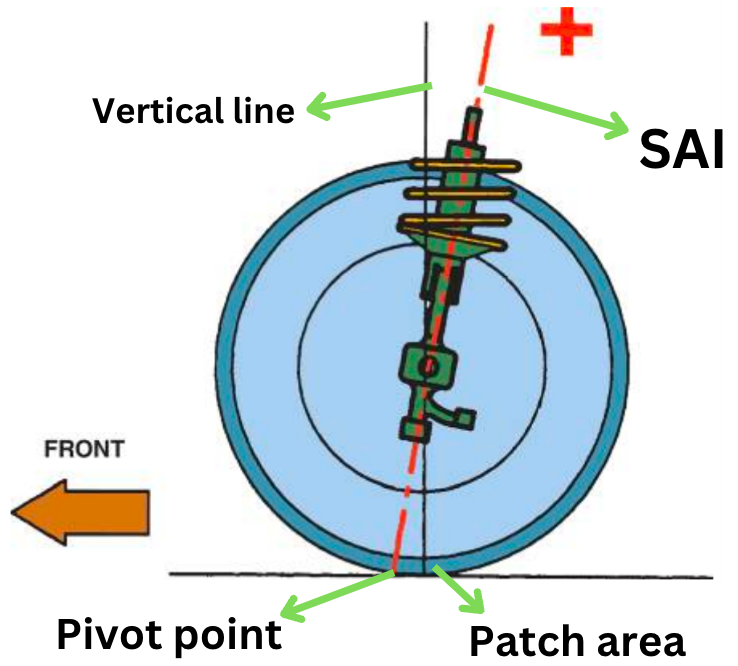
One of the important things that helps the steering wheel go back to the center is called the steering axis inclination (SAI) and caster angle. This is the angle between the line down the middle of the steering axis and a straight up line from the center of the part of the tire that touches the road (when looking from the front).
The steering axis is the imaginary line that connects the upper and lower points points of the steering knuckle, which is the part that holds the wheel hub and spindle.
The SAI is positive, meaning it tilts inwards (away from the steering wheel). This steering axis inclination is called the “Caster angle“.
When we start to turn the wheel, the tires on one side of the car feel more resistance from the road surface.
At the same time, the tires on the other side feel less resistance. This difference in resistance creates an imbalance in torque, which causes the pivot point to move slightly off-center.
Now here is where the steering system play its role. The steering setup is made so the pivot point (as shown in the above picture) is placed a little in front of where the tire touches the road (also called contact patch).
This on purpose offset allows the torque generated by the tire patch area to act upon the pivot point and restore it to its center position.
As the torque diminishes, the steering system ensures that the wheels gradually straighten out, bringing the steering wheel back to its original position.
It’s important to note that various factors can affect the return-to-center ability of a vehicle’s steering system. Factors such as tire pressure, suspension components, and alignment can all impact the smoothness and effectiveness of this process.
To further facilitate this self-centering action, the steering system incorporates various components, including the steering column, steering gear, and tie rods.
Bonus Read: Steering wheel turns by itself
Causes Of Steering Wheel Not Returning To Center After Turn
Here are the causes of steering wheel binding or pulling to one side:
1. Tie Rod Looseness Causing Steering Wheel Play
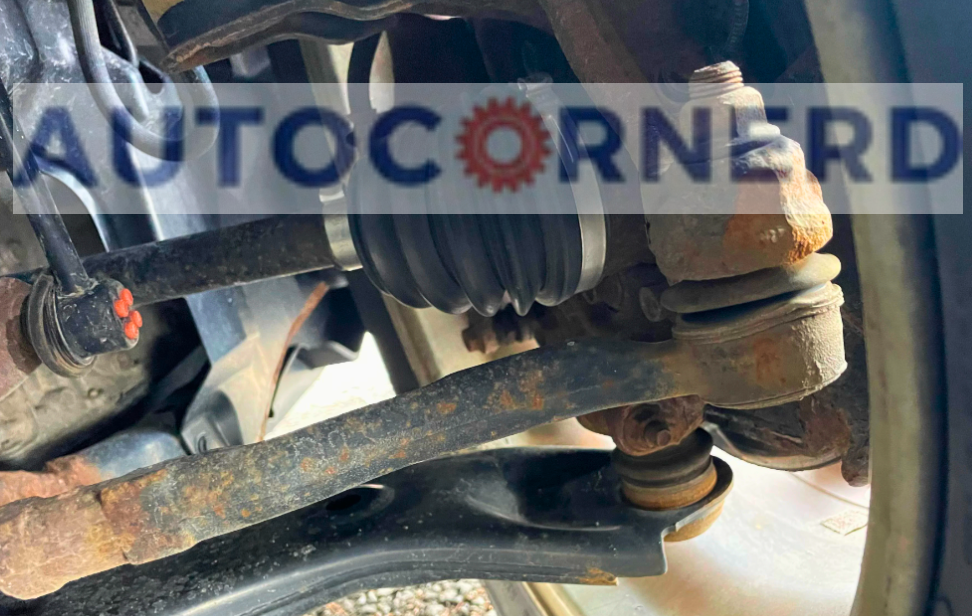
The tie rod connects the steering wheel to the front wheels. When the driver turns the steering wheel, the tie rod tells the wheels to turn left or right. This is how the driver controls where the car goes.
Over time, the tie rod can get loose. This means there is extra space between the steering wheel and front wheels. When the driver finishes a turn, the wheels do not go right back to pointing straight ahead. They stay turned a little bit instead of lining up straight.
Wheels that do not line up straight make the car harder to control. The driver has to keep turning the wheel to make the car keep going straight. This loose tie rod causes a delay in getting the wheels back in line after a turn.
I have also written about how far you can still drive with a bad tie rod. Check that out too.
What Makes the Tie Rod Get Loose?
A few things can cause the tie rod to get loose:
- The ends of the tie rod fit into joints. After many uses over time, the movement wears out these joints. This normal wear allows looseness and makes the wheels not point straight ahead.
- The tie rod joints need grease to move smoothly. If the joints are not lubricated enough, it speeds up the wear and looseness.
- Hitting bumps or curbs can bend the tie rod or other steering parts. Bent parts allow looseness where they connect. This makes the wheels not point straight ahead after turns.
2. Ball Joints Binding Not Allowing Steering Wheel To Center
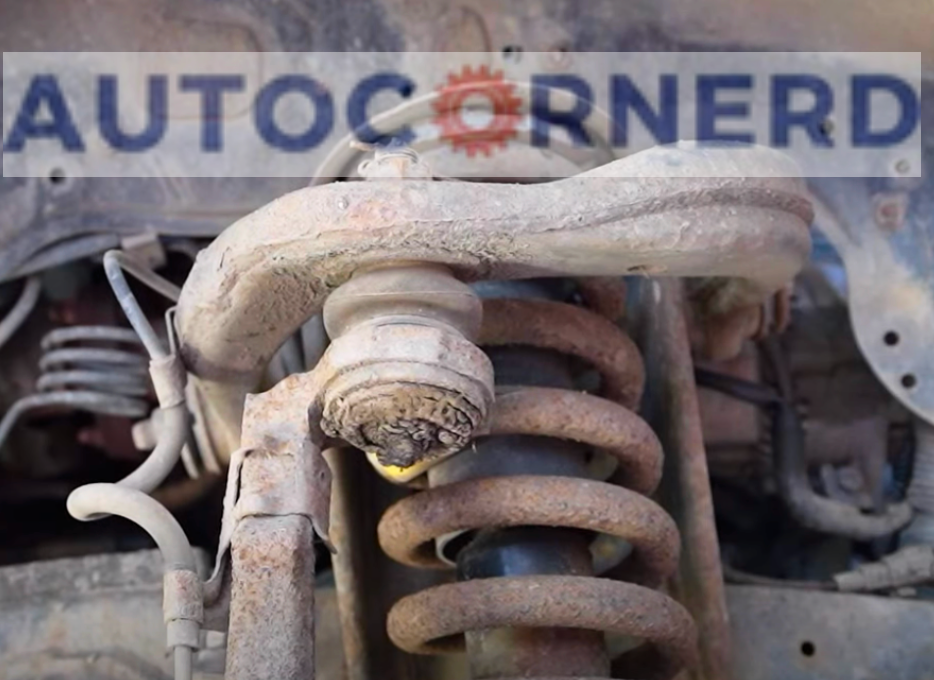
The ball joint serves an important role by connecting an important car part called the steering knuckle to another part called the control arms. This lets the wheels move smoothly and lets the driver turn the steering wheel.
Ball joints consist of a spherical bearing enclosed in a housing, allowing for multidirectional movement.
Over a period of time, ball joints can get worn out or broken. When this happens, they can get stuck.
Getting stuck means the ball joint rubs too much or does not move easily inside the container. This can stop the steering parts from placing the wheels straight and moving them back to the center position.
Why do ball joints of suspension system become bound?
Over time, these three things can cause the ball joints to get stiff and not move as well.
- The lubrication inside the ball joints can dry up over time. This means the moving parts don’t slide as easily. Without enough grease, it will be hard for the steering wheel to move back to the middle.
- Dirt and other gross stuff can get stuck inside the ball joint too. Small rocks and dust get in there and get in the way of the parts moving smoothly. This makes the steering heavier than it should be.
- Salt and water from the road are bad for the ball joints too. When it rains, the salt makes the metal parts start to rust. Rusty parts don’t slide as good, which can lead to stuck steering.
How to fix?
To address the problem, you may need to clean and lubricate the ball joints to remove any accumulated dirt and debris.
To lubricate worn-out ball joints, you can use a grease gun to add grease between the ball and socket. This can be done by forcing the grease in under pressure via a nipple or by using a needle to carefully lift the boot and add grease to the joint.
You can also poke the needle into the boot of the ball joint to fill the grease but make sure to seal the little pinhole with tire patch gel or glue. You can use this grease gun with this grease injecting needle.
In more severe cases of wear or damage, the ball joints may need to be replaced entirely to restore smooth movement and proper steering wheel functionality.
3. Worn Caster Bushing
The small rubber or plastic caster bushings are important parts inside the steering system. They sit inside the control arm or spindle and allow the steering knuckle to turn smoothly.
The caster bushing is also sometimes called the control arm bushing. You can find it near the ball joint.
Over a long time, these bushings can become worn out, dry out or get damaged from normal use of the vehicle on roads. Potholes and rough roads can cause wear too. If the caster bushings wear too much, it can lead to issues with steering.
Worn bushings cannot provide the support and stability needed to keep the wheels pointed correctly.
As a result, steering may feel sluggish or need more effort. The steering wheel also may not go back to center on its own after a turn.
4. Insufficient Tire Pressure and Uneven Tire Wear
Having low air pressure in your tires and uneven tire wear can cause issues with the steering wheel not going back to the center position. When the tire pressure is low, it affects how well the car steers and works.
The tires become flat because there is not enough air in them. This bigger touching area makes more friction, making the tires harder to turn smoothly.
Because of this increased friction, when you turn, the tires may not grip the road as well, causing the steering wheel to resist going back to center.
Also, low pressure tires can alter the suspension geometry, putting extra strain on parts like the control arms and tie rods which are important for straight steering. When these get extra strain, it can affect the wheel centering.
Uneven tire wear is another issue. This means some parts of the tire wear out faster than others.
The uneven sections can cause imbalanced traction during turns. Consequently, the steering may not center properly.
When tires wear unevenly, it creates an imbalance in alignment. This can cause the wheel to pull or not return to middle. It can also make the wheel shake while driving.
How to fix?
Here are some possible solutions:
- Check your tire air regularly: It’s important to check your tire air about once a month or before long trips. Look in your owner’s manual for the right amount of air pressure.
- Rotate your tires: To prevent uneven wear, rotate your tires on a schedule. Also, have your tires aligned if they pull to one side or wear unevenly.
- Replace worn tires: If your tires wear out all unevenly and an alignment won’t fix it, it may be time for new tires. Tires that are too worn can mess with how the wheel steers and aren’t very safe.
5. Strut Bearing Damage Delaying Steering Wheel Recentering
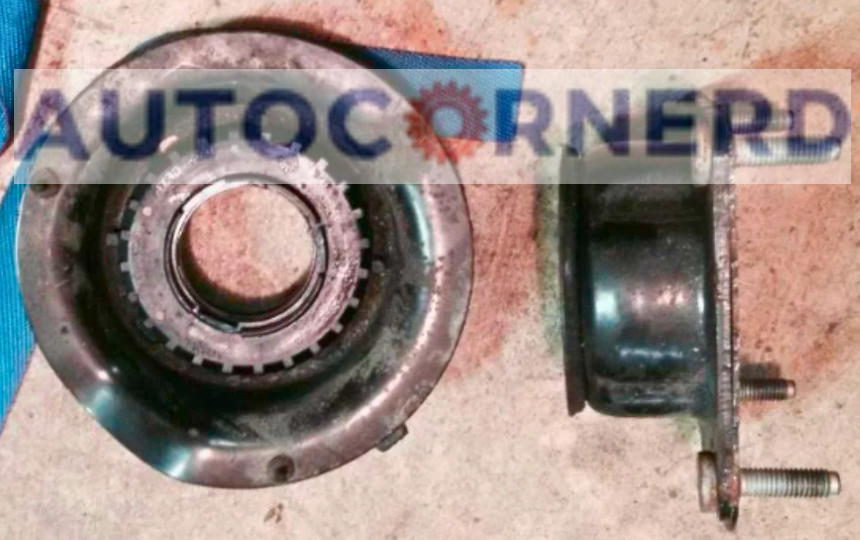
The strut bearing is an important part of your vehicle’s suspension system. It is located at the top of the strut assembly and connects the strut to the body of the vehicle.
The main job of the strut bearing is to allow the strut to smoothly turn and move up and down as the wheels move over bumps in the road. This helps the strut absorb any shakes or bumps from the road.
The strut bearing has a few key parts. There is a metal piece that turns smoothly. A rubber part helps reduce noise and vibrations. And a plate attaches the strut bearing to the vehicle’s body.
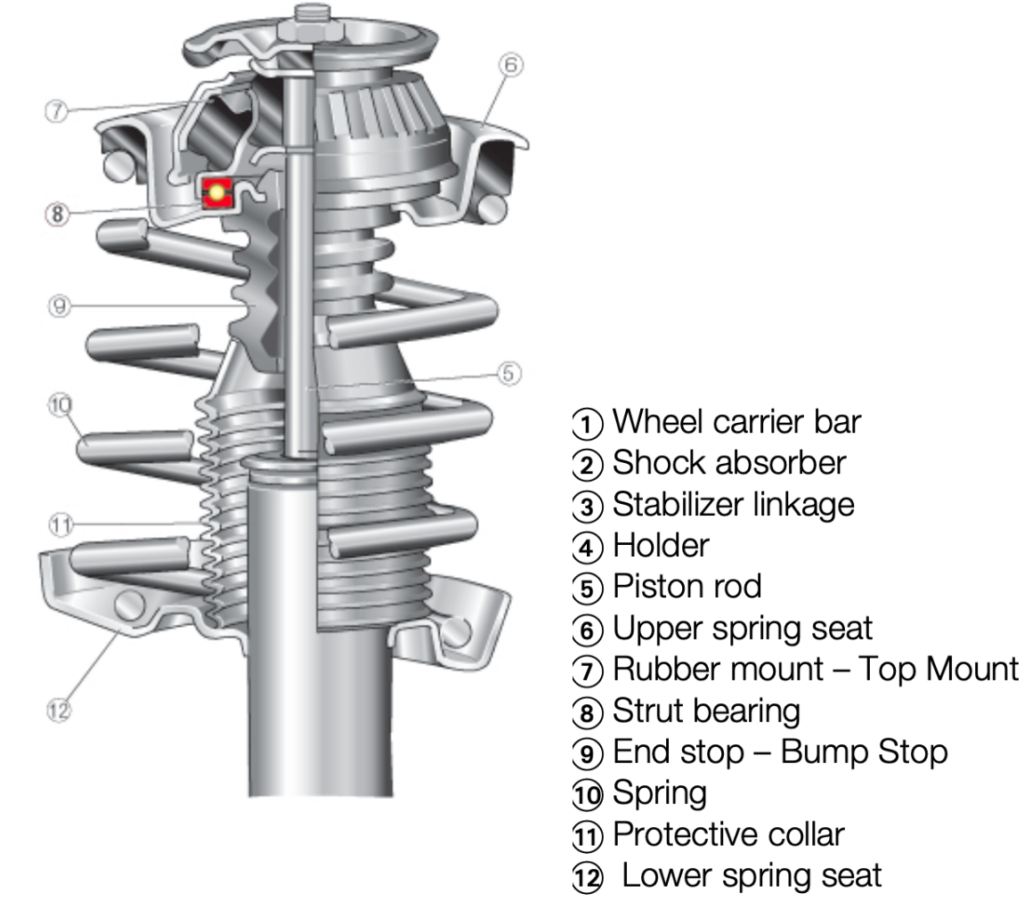
If the strut bearing is bad, it can affect more than just how the steering wheel goes back to the middle. It may also add to suspension noises and shakes.
As the strut bearing gets more used, it may start making squeaky or creaky sounds when the vehicle is moving. You can especially hear these noises when turning the steering wheel or driving over bumps or uneven surfaces.
6. Sector Shaft Play Giving Steering Wheel Slack
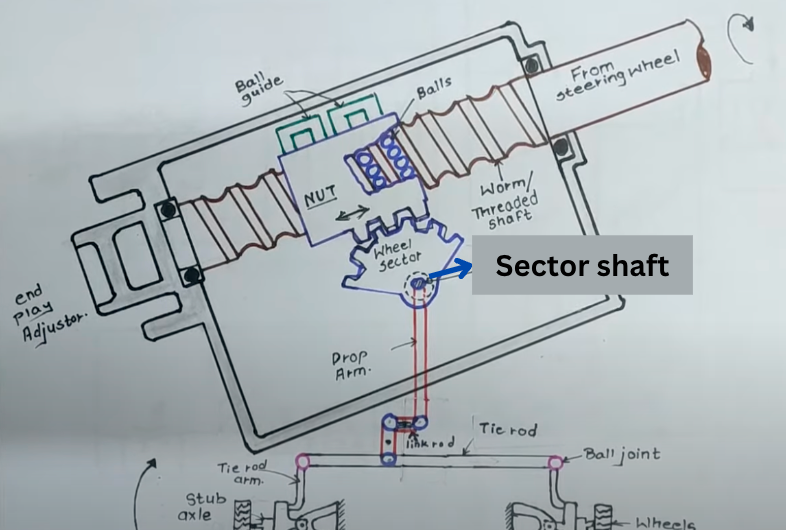
The sector shaft is an important part of a recirculating ball steering system. It connects the steering gearbox to the pitman arm, which helps turn the wheels.
The sector shaft changes the turning of the steering wheel into straight movement. This lets you turn the vehicle. But if there is too much movement or play in the sector shaft, it can cause steering problems. The steering wheel may not go back to the middle after a turn.
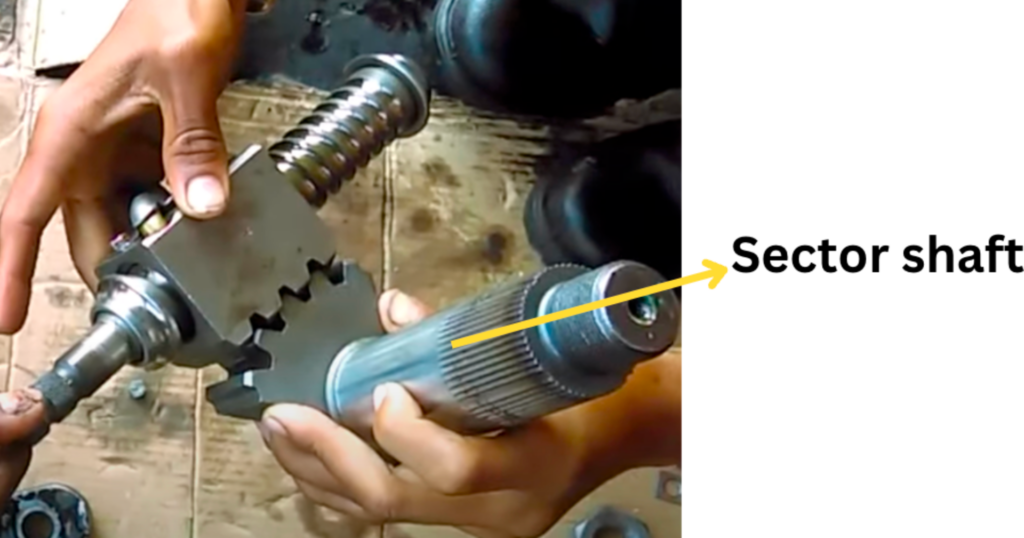
You can also watch the following video to understand the working of recirculating ball steering system:
When there is play in the sector shaft of the steering wheel, the gears inside the gearbox may not fit together correctly.
If the gears do not fit together right, it takes longer to send the steering input to the wheels. That makes it hard for the steering wheel to go back to the middle after a turn.
Also, with play in the sector shaft, the steering system loses its ability to provide the same steering effort all the time.
So you may notice the steering wheel feels lighter or heavier to one side when turning. That can make it tougher for the wheel to naturally find its way back to the middle.
Lastly, play in the sector shaft can also lead to misalignment of the steering system components.
The misalignment causes the steering wheel to steer a little off from the center. Then the steering wheel does not go back to the right spot after a turn. It is like your car has a mind of its own. And we don’t want that!
How to fix?
If you have play in sector shaft, you should get it fixed as soon as possible by a professional mechanic.
Depending on the severity and cause of the problem, you may need to replace some parts or adjust some settings. Some of the possible solutions are:
- Replacing or repairing the worn or damaged parts, such as the worm gear, the sector gear, the recirculating balls, the bearings or the seals.
- Adjusting or tightening the sector shaft preload, which is usually done by turning a screw or nut on top of the steering box until there is no play in sector shaft.
- Flushing or changing the power steering fluid, which can improve its lubrication and performance.
The following video is quite helpful to understand the process:
7. Steering Rack Bushing Wear
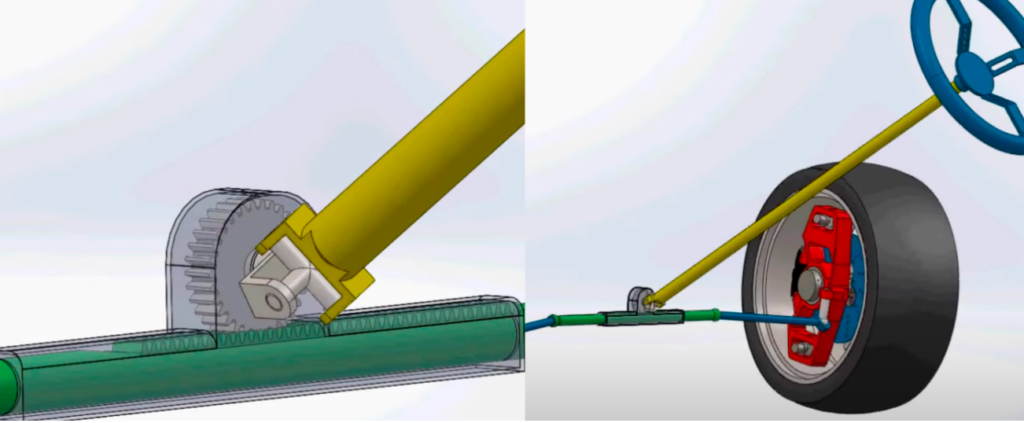
The steering rack is the critical component connecting the steering wheel to the front wheels, transforming the wheel’s circular motions into the linear movements needed to turn the vehicle.
The steering rack mounts on the vehicle frame using metal, rubber or polyurethane bushings that aim to absorb impact, provides stability and reduces vibrations for smooth steering.
Attached at both ends, the steering rack bushings stop metal-on-metal contact between the rack and frame that causes excessive wear.
When installed properly, the steering rack bushings help align and secure the rack in a centered position within the frame. This centered alignment allows the rack to slide back and forth smoothly as the steering wheel is turned.
With quality bushings, drivers experience precise control as the rack glides easily within its range of motion. The result is a natural, centered feel through all steering inputs.
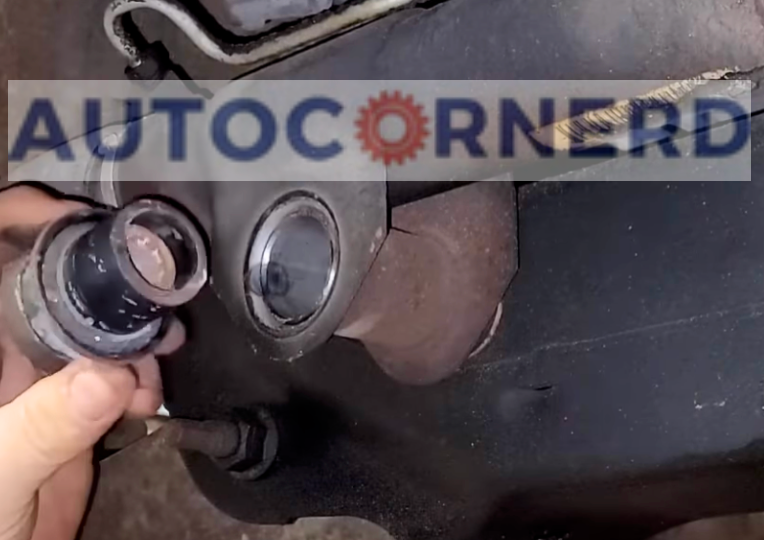
In any case, when the steering rack cushionings are worn out, they make an excessive play or free play in the steering column. This implies that the rack can move past its typical range of motion and become misaligned or twisted.
This also affects the alignment of the front wheels, which can cause them to point in different directions or not straighten up after a turn. As a result, the steering wheel fails to return to center after a turn and you have to manually adjust its position.
How do steering rack bushings become bad?
Steering rack bushings can get worse over time with use. They may crack, tear, deform or lose their stretchability because of things like:
- Age: Rubber and plastic parts tend to break down as time passes when exposed to heat, cold, wetness and oxygen.
- Road conditions: Driving on rough roads, over bumps or holes in the road, or in very bad weather can put more stress on the bushings and cause faster wearing.
- Driving style: Aggressive driving with lots of hard turns, brakes or speed changes can also exert more stress on the bushings and speed up their wearing.
- Fluid leaks: Leaking power steering liquid or engine oil can get into the bushings and make them swell or softer, which reduces how well they work.
Final Thoughts
In summary, your steering wheel is a key part of driving. When it doesn’t return to center smoothly, it makes driving risky.
Worn car parts like tie rods, ball joints and bushings often cause this issue. They make the steering loose and hard to control. Uneven tire wear can also throw off steering.
If your steering feels loose, it needs a fix. Catching problems early keeps your driving safe. Letting them linger means you could lose control and crash.
Checking for steering issues should be regular. That way, you stay on top of problems before they get bad. Proper maintenance and awareness helps ensure confident driving.
Some First Hand Experiences Shared By Users In Different Communities
Our team conducted research across various online communities, forums, and subreddits to gather user comments and opinions on “steering wheel not returning to center”.
User 1 says:
I had this with my Tucson. Thought it was a serious issue, but it turned out to be uneven tire pressure. After correcting the tire pressure, the steering returned to normal.
User 2 says:
Noticed my steering wheel sticking after turns. After some digging, I found out the issue was with the suspension bushings being worn out. Replaced them and it’s been fine since.
User 3 says:
I had a similar issue in my Jetta. It was actually caused by a defective steering angle sensor. Once that was replaced, the steering wheel started returning to center as normal.
User 4 says:
Experienced this in my Tahoe. It was unnerving, especially on highways. Turned out to be a problem with the power steering fluid being low. Topped it up and the problem was solved.
